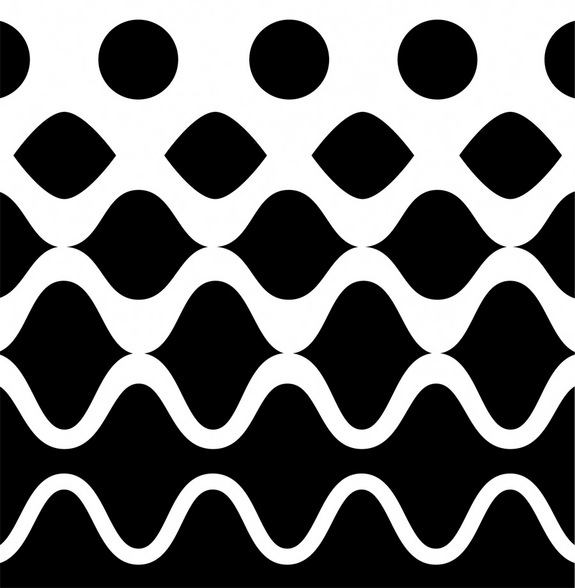
The implication of the Planck model for thermal radiation is that light is quantized and therefore it can act like particle. This particle is called a photon. This realization means that light can be absorbed in the way that a particle is absorbed. This is the first step towards understanding transitions between quantum states. Even in 1900 there was evidence for such transitions. The photoelectric effect was not explained by classical physics. Light could be used to eject electrons from a metal, but the intensity of the light was not the determining factor. Rather, the frequency is the crucial factor that determined whether an electon was ejected or not. If the frequency is below a certain threshold value no electrons will be ejected, irrespective of the intensity. This observation suggests that photojection is a quantum effect. If the quantum of hte light is too low nothing will happen. If the quantum of the light is greater than a threshold value electrons will be ejected.
Wave-particle duality
The quantum of light that can eject an electron is called a photon. It behaves like a particle and so we can think of a photon as a particle of light. This concept is consistent with the observation that light must have a certain threshold frqeuency in order to eject an electron. The photon is a packet of energy that is delivered to the surface. If that packet is greater than the binding energy, then an electron can be removed from the metal. The energy is given by E = h nu. Thus, we see a strong connection with the idea of quantization by Planck since the same constant appears in the photoelectric effect that was used to explain the cavity modes that would give rise to the correct form of the thermal radiation distribution function. If we accept the possibility that light, which was previously always thought of as a wave, can be a particle, then perhaps it is possible for a particle to be a wave. This was the idea proposed by DeBroglie. He suggested that any particle can be like a wave such that p = h/lamda. Therefore, lamda = h/p = h/mv. For example, an electron with a known velocity can be calculated to have a wavelength. Today, this idea is firmly established in the electron microscope application of electron diffraction. We can shoot electrons through matter and see their diffraction if the matter is crystalline. The diffraction properties are consistent with the wavelength we calculate using the DeBroglie equation.
Atomic absorption and emission as a quantum effect
There were other unexplained phenomena around the year 1900 that also began to make sense if one accepted the idea that light could be absorbed as a particle. There were well-defined emission lines of hydrogen that had been studied by a number of scientists. Rydberg combined these observations and noticed a pattern that suggested that the energy levels must depend on an integer value. The individual energy levels of hydrogen appear to follow the pattern E = -R/n2, where R is a constant known as the Rydberg constant. For hydrogen R is equal to 13.6 electron volts (eV) and n is an integer greater than zero. For other nuclei we can write E = -ZR/n2 where Z is the nuclear charge. The lines the emission spectra fit a pattern of emission between different states with two different quantum numbers (see Quantum transitions)
The wave equation in quantum mechanics
- There is no ballistic motion in quantum mechanics since particles behave like waves and therefore the equation of motion is a wave equation.
- Instead of defining precisely where particles are located in space (i.e. using coordinates x, y and z), the solution of the wave equation is a wave function that can be used to calculate the probability for the particle to be in a given region of space.
- The probability can be calculated from the square of the wave function. The square will involve a product of the complex conjugate if the wave function is complex. The wave function must be normalized in order for the probability to be meaningful.
- The wave function can also give properties of the wave function solution in the form of operator equations. For example, the energy can be calculated using an energy operator, known as the hamiltonian. The momentum can be calculated using a momentum operator, and so on.
- Operators in quantum mechanics are Hermitian. This property ensures that the eigenvalues calculated suing an operator equation are real. We prove this property in the presentation on the postulates of quantum mechanics.
|